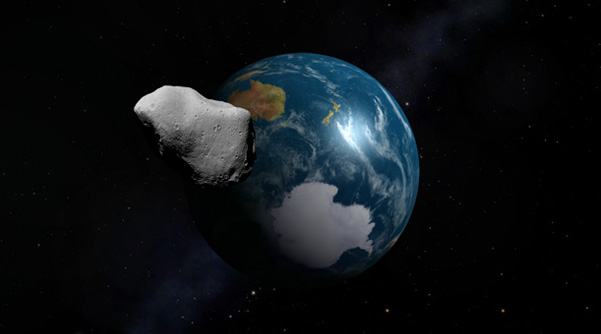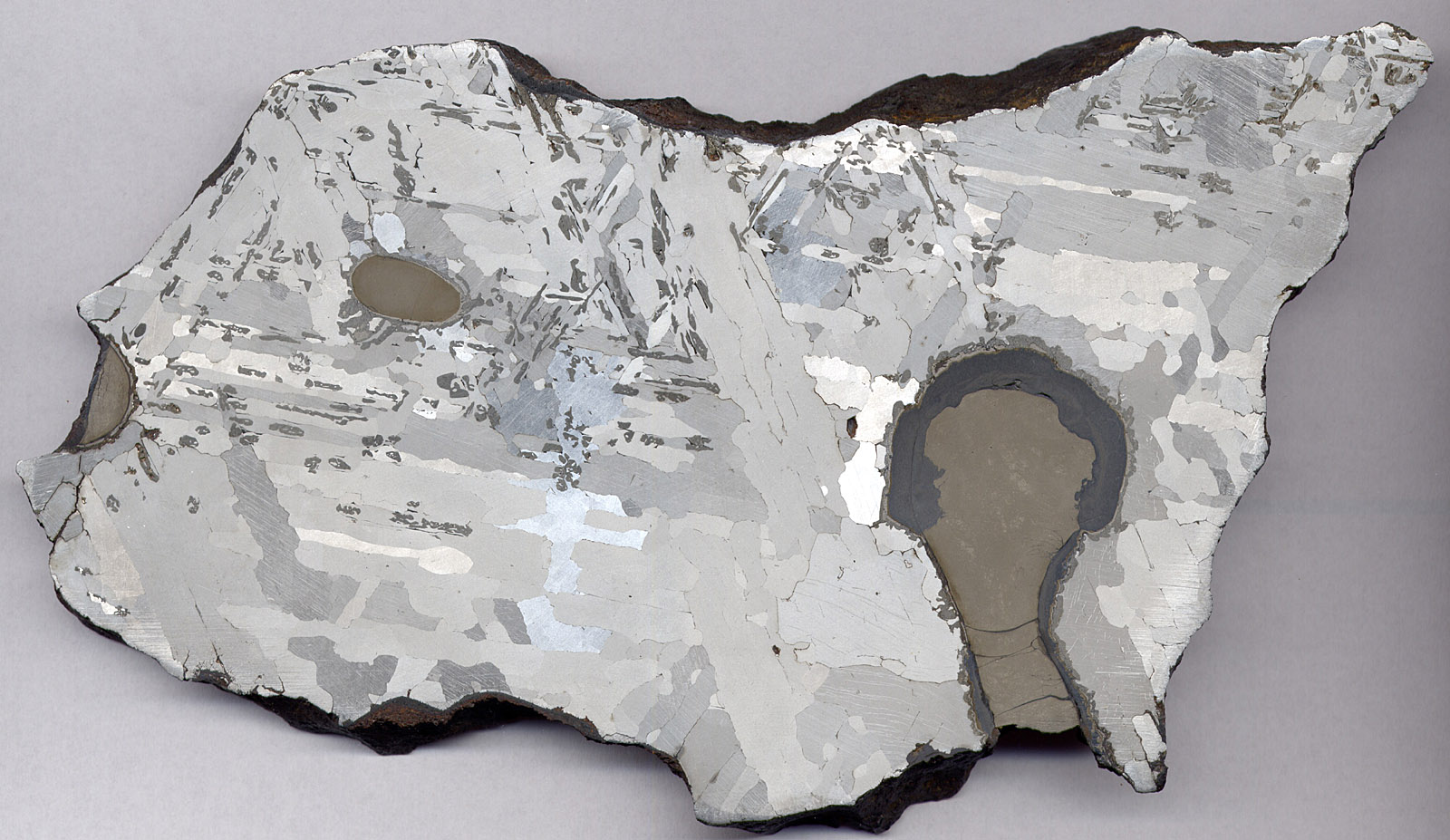Earthcaches are cool, just think and cache them ;))

Credits: Polish Geological Institute / Państwowy Instytut Geologiczny // wiki.meteoritica.pl // Earth Impact Effects Program: university professor H. Jay Melosh, Dr Gareth Collins, Robert Marcus // Press/Siever "Allgemeine Geologie" (book) // Morasko meteorite photo: Andrzej S. Pilski // John S. Lewis "Rain Of Iron And Ice" (book) // collage Few thousand years ago based on photos by NASA & WorldWideTelescope.org
 180° panorama: the biggest of the eight Morasko impact craters / photo by Hanbei
180° panorama: the biggest of the eight Morasko impact craters / photo by Hanbei

Koordynaty tego earthcachea zaprowadzą cię do miejsca, które z geologicznego punktu widzenia jest w Polsce ewenementem. To że Ziemia w przeszłości wielokrotnie trafiona została kosmicznymi odłamkami, nie ulega wątpliwości. Jednak nieprzerwane kształtowanie się powierzchni naszej planety - przez ruchy tektoniczne, erozję, wreszcie ingerencję roślin czy nawet człowieka - powoduje, że odnalezienie na Ziemi dobrze zachowanego krateru uderzeniowego nie jest łatwe. Kratery Morasko są pozostałością po uderzeniu fragmentami meteorytu, który około 5,5 tysiąca lat temu wchodząc nad Europą w atmosferę Ziemi rozpadł się na mniejsze kawałki. Doprowadziło to do tzw deszczu meteorytów, czyli równoczesnego upadku dużej liczby odłamków meteorytu na powierzchnię Ziemi. Do dzisiaj przetrwało osiem kraterów, z których siedem - w tym również największy - znajduje się na terenie rezerwatu przyrody Meteoryt Morasko.
Meteoryt wszedł w atmosferę Ziemi po orbicie nachylonej o 30° do powierzchni Ziemi, lecąc z szybkością 11-18.000 km/s (uwaga, jedno z zadań!). Rozgrzany przez tarcie w atmosferze rozpadł się na mniejsze fragmenty. Największy z nich, w momencie zderzenia z powierzchnią planety, wyparował wywołując tym samym potężną eksplozję. Jej energię naukowcy szacują na 0,2 kilotony: to równowartość wybuchu 200 ton trotylu. Największy krater uderzeniowy - nad którym stoisz - to właśnie pozostałość po tej eksplozji. Mniejsze kawałki wbiły się głęboko w ziemie, tworząc pomniejsze kratery.
Pierwszy odłamek meteorytu Morasko odnalazł w listopadzie 1914 roku niemiecki podoficer podczas budowy umocnień wojskowych. Ostatni - będący jednocześnie największym meteorytem znalezionym w Polsce - został wydobyty w październiku 2012. Fragment ten ważył około 300 kg razem ze zwietrzeliną. 31 października 2012 został zaprezentowany na terenie Instytutu Geologii Wydziału Nauk Geograficznych i Geologicznych UAM. Po oczyszczeniu ze zwietrzeliny fragment ten ważył 261 kg.
Meteoryt Morasko zaliczony został do grupy meteorytów żelaznych, tzw. oktaedrytów gruboziarnistych (IAB-MG). Był częścią meteoroidu pochodzącego z Pasa Planetoid, obszaru Układu Słonecznego znajdującego się między orbitami Marsa i Jowisza.

Few thousand years ago... / photos: NASA / WorldWideTelescope; collage made by Hanbei
Odpowiedzi proszę wysyłać na mój profil gc. Nie trzeba czekać na odpowiedź, można od razu logować. Jeśli odpowiedź będzie niepoprawna, zgłoszę się sam. Pamiętajcie proszę, że logi bez podesłanych odpowiedzi będą kasowane.
 Przekrój meteorytu. Na wytrawionej powierzchni widać figury Widmanstättena i owalne nodule (inkluzje) troilitu. Nodula z prawej posiada grafitową otoczkę. Photo & background photo by Andrzej S. Pilski
Przekrój meteorytu. Na wytrawionej powierzchni widać figury Widmanstättena i owalne nodule (inkluzje) troilitu. Nodula z prawej posiada grafitową otoczkę. Photo & background photo by Andrzej S. Pilski
Meteorite cross-section. The digested surface shows a Widmanstätten pattern and oval-shaped troilite nodules (inclusions). The one on the right has a graphite rim. Photo & background photo by Andrzej S. Pilski
ZADANIA:
- Wykorzystując koordynaty earthcachea i podane waypointy: podaj wysokość n.p.m. trzech kraterów (I, II, III)
- Z jakiego kierunku nadleciał meteoryt?
- Dlaczego amfiteatralny wał ziemi - na którym stoisz pod koordynatami - jest akurat w tym miejscu najwyższy?
- Morasko przed 5,5 tys lat było pustkowiem. Jak poważnym zagrożeniem są duże obiekty mogące wejść w kolizję z naszą planetą, pokaże ci kolejne zadanie. Szacuje się, że w okolicach Moraska spadło ok. 200 ton odłamków meteorytu. Pierwotna bryła mogła mieć około 30 m średnicy. Pomnóż - dla ułatwienia optycznego i większej ilości szczegółowych informacji - tę wartość (średnicę) przez 100, pozostając przy meteorycie żelaznym (materiał) i skałach osadowych jako podłożu, w które uderzył meteoryt Morasko. Zachowaj ten sam kąt uderzenia oraz tą samą szybkość meteorytu. Wykorzystaj "kalkulator asteroidowy" profesora H Jay Melosha i jego grupy badawczej z Purdue University, West Lafayette w USA. "Stań" 150 km (kilometrów!) od miejsca uderzenia. Podaj kilka informacji z miejsca w którym się znalazłeś (siła wiatru, siła trzęsienia ziemi w skali Richtera, co dzieje się np z twoim ubraniem, co z budynkami, mostami czy drzewami)...
- Zadanie opcjonalne: czyż pozostałości po przybyszu z kosmosu nie są warte pamiątkowego zdjęcia? ;)

Dieser Earthcache zeigt eine geologisch besondere Hinterlassenschaft: die Einschlagkrater von Morasko. Dass die Erde in Vergangenheit regelmäßig von kleineren und größeren Himmelskörpern getroffen wurde, steht außer Frage. Solcher Krater zu finden, ist jedoch recht schwierig, da sich die Oberfläche unseres Planeten permanent verändert, sei es durch tektonische Bewegungen, Erosion, ja selbst durch Planzenbewuchs oder menschlichen Einfluß. Die acht Einschlagkrater von Morasko entstanden vor ca. 5.500 Jahren. Damals trat ein Meteorit über Europa in die Erdatmosphäre ein, zerbarst darin und prasselte in Form eines Meteoritenregen nieder. Sieben der acht bis heute erhaltenen Krater - darunter der größte davon - befinden sich im Naturschutzgebiet Rezerwat Przyrody Meteoryt Morasko.
Der Winkel des Einschlags betrug 30°, der Meteorit trat mit einer Geschwindigkeit von 11.000 bis 18.000 km/s in die Erdatmosphäre ein (aufgepasst, eine der Aufgaben!). Durch die atmosphärische Reibung zerfiel der massiver Himmelskörper in kleinere Stücke. Das größte Bruchstück schlug so stark ein, dass es beim Aufprall in einer Explosion verdampfte. Wissenschaftler schätzen die Energie dieser Explosion auf 0,2 Kilotonnen ein, was einer Explosion von 200 Tonnen TNT entspricht. Dieser Impakt bildete den größten der Morasko Krater, an dem du grade stehst. Weitere Fragmente schlugen ein, ohne jedoch in einer Explosion aufzugehen. Sie hinterließen mehrere kleinere Krater.
Das erste Bruchstück wurde im November 1914 von einem deutschen Unteroffizier gefunden. Beim Ausheben einer Geschützstellung fand der Mann einen halben Meter unter der Erdoberfläche einen Metallklumpen mit einem Gewicht von 77,5 kg. Eine in Berlin durchgeführte Analyse bestätigte, dass es sich um meteoritisches Material mit einem hohen Eisengehalt handelte. Der letzte - und bisher größte - Morasko Meteorit wurde im Oktober 2012 gefunden: er wog knapp 300 kg. Am 31 Oktober 2012 wurde er offiziell im geologischen Institut der Adam-Mickiewicz-Universität in Posen der Öffentlichkeit präsentiert. Das gesäuberte Fragment wog immer noch 261 kg.
Das meteoritische Bruchstück wurde als grober Oktaedrit der Gruppe IAB-MG klassifiziert. Ursprünglich stammte der Meteoroid, dessen Bruchstücke immer wieder in Morasko gefunden werden, aus dem Asteroidengürtel, der sich zwischen den Planetenbahnen von Mars und Jupiter befindet.
Bitte, sendet eure Antworten mithilfe meines Profils. Ihr dürft direkt loggen, ohne meine Antwort abzuwarten. Sollten eure Antworten falsch sein, melde ich mich. Bitte denkt dran: Log-Einträge ohne die abgesandte richtige Antwort-E-Mail werden gelöscht.
AUFGABEN:
- Mithilfe der Koordinaten dieses Earthcaches und der beiden angegebenen Waypoints ermittle die Höhen über dem mittleren Meeresspiegel der Krater I, II und III
- Aus welcher Richtung kam der angeflogene Meteorit? (Die Infotafel vor Ort ist leider nur auf Polnisch, ermittle die angefragte Richtung mithilfe von GPS-Kompass)
- Warum ist der amphitheatralische Erdwall - Kraterrand - auf dem du stehst gerade an dieser Stelle am höchsten?
- Morasko war vor 5.500 Jahren sicherlich menschenleer. Heutzutage stellt ein solcher Himmelskörpereinschlag für Menschen reale Gefahr dar. Wie ernst die Konsequenzen eines Impaktes sein können, zeigt die nächste Aufgabe. Man geht davon aus, dass in Morasko ca. 200 Tonnen des Meteoritenregens niedergingen. Der Durchmesser des ursprünglichen Himmelskörpers betrug wahrscheinlich ~ 30 m. Um detaillierte Infos zu bekommen, multipliziere diesen Wert (Durchmesser) mit 100, behalte jedoch den Meteoritenaufbau (Eisen) und das Sedimentgestein als den Untergrund, auf den Morasko fiel, sowie den Einschlagwinkel und die Objektgeschwindigkeit. Tippe diese Werte ein in das "Earth Impact Effects Program" von Professor H Jay Melosh und seiner Arbeitsgruppe von der Purdue University in West Lafayette, USA. "Bleib" 150 km (Kilometer!) vom Einschlagsort entfernt. Teile mit, was sich in dieser Umgebung nach dem Einschlag abspielt (Wind- & Erdbebenstärke, Tsunami-Wellenhöhe usw.)...
- Optional: ein Bild des deep impact lohnt sich allemal ;)
 Yuriko
Yuriko translates my earthcaches into English. You can ask her for help too ;) Yuriko, big thanks for your perfect support ;)
The coordinates of this earthcache will lead you one of the most unique geologic sites in Poland. We know without doubt that Earth was hit by numerous meteorites in the past. However, the continuing surface shaping processes – caused mostly by tectonic movements, erosion and the influence of plants and humans – make it difficult to find a well-preserved impact crater. The craters of Morasko were formed by the impact of a cluster of meteorite pieces. About 5,500 years ago the meteorite entered Earth’s atmosphere above Europe and underwent fragmentation, splitting into numerous smaller pieces. This resulted in a so-called meteorite shower – a large number of meteorite pieces fell to the Earth’s surface simultaneously. Until today eight craters were preserved, including the largest one which is located at the Morasko Meteorite Natural Reserve.
The meteorite entered Earth’s atmosphere at an altitude angle of 30°, traveling at 11-18,000 km/s (please see one of the tasks). The friction caused it to heat up and split into pieces. The largest piece hit the ground and evaporated, causing a huge explosion. The energy released was estimated by scientists to be equal to 0,2 kilotonnes (an equivalent of energy released in the detonation of 200 tonnes of TNT.) The largest impact crater (the one you are standing next to) was formed by this explosion. Smaller meteorite fragments were buried deep in the ground, forming smaller craters.
The first piece of the Morasko meteorite was found by a German non-comissioned officer during the construction of military fortifications in November 1914. The last fragment (and the biggest one ever found in Poland) was excavated in October 2012. It weighed about 300 kg together with the saprolite (weathered rock). On 31 October 2012 it was exhibited at the Institute of Geology, Adam Mickiewicz University of Poznan. After the removal of the saprolite, the weight of the meteorite was 261 kg.
The Morasko meteorite belongs to the group of iron meteorites, the so-called coarse octahedrites (IAB-MG). It used to be a part of a meteoroid originating from the asteroid belt (a region of the Solar System located between the orbits of Mars and Jupiter).
Please answer the following questions and send the answers via my Geocaching profile. There is no need to wait for my reply, feel free to log immediately after. If the answers are incorrect, I will let you know. Please bear in mind that logs posted by persons who hadn't sent in the answers will be deleted.
TASKS:
- Using the coordinates of this eartcache as well as the given waypoints, calculate the elevation above sea level of craters I, II and III.
- From which direction did the meteorite come?
- Why is the amphitheatrical earth bank highest at the section indicated by coordinates?
- 5,500 years ago Morasko was an empty wilderness. The following task is supposed to show you how dangerous large objects colliding with Earth’s surface can be. About 200 tonnes of meteorite pieces are believed to have fallen in the area of Morasko. The body of the meteorite before fragmentation could be about 30 m in diameter. Let’s multiply this diameter by 100 (in order to make the results more clear) and let’s assume that the meteorite in question was an iron meteorite, that the ground hit by it was made of sedimentary rocks and that the altitude angle of impact and the speed of the meteorite were the same as mentioned before. Use the asteroid calculator, "Earth Impact Effects Program" designed by prof. H. Jay Melosh and a group of scientists from the Purdue University, West Lafayette, USA. Now assume that you are 150 km (yes, kilometres!) from the impact site. Provide some information about what might possibly happen there (wind speed, earthquake’s magnitude in Richter’s scale, what happens to your clothes, buildings, bridges, trees…).
- The remnants of an object originating from space are definitely worthy of a picture ;)
